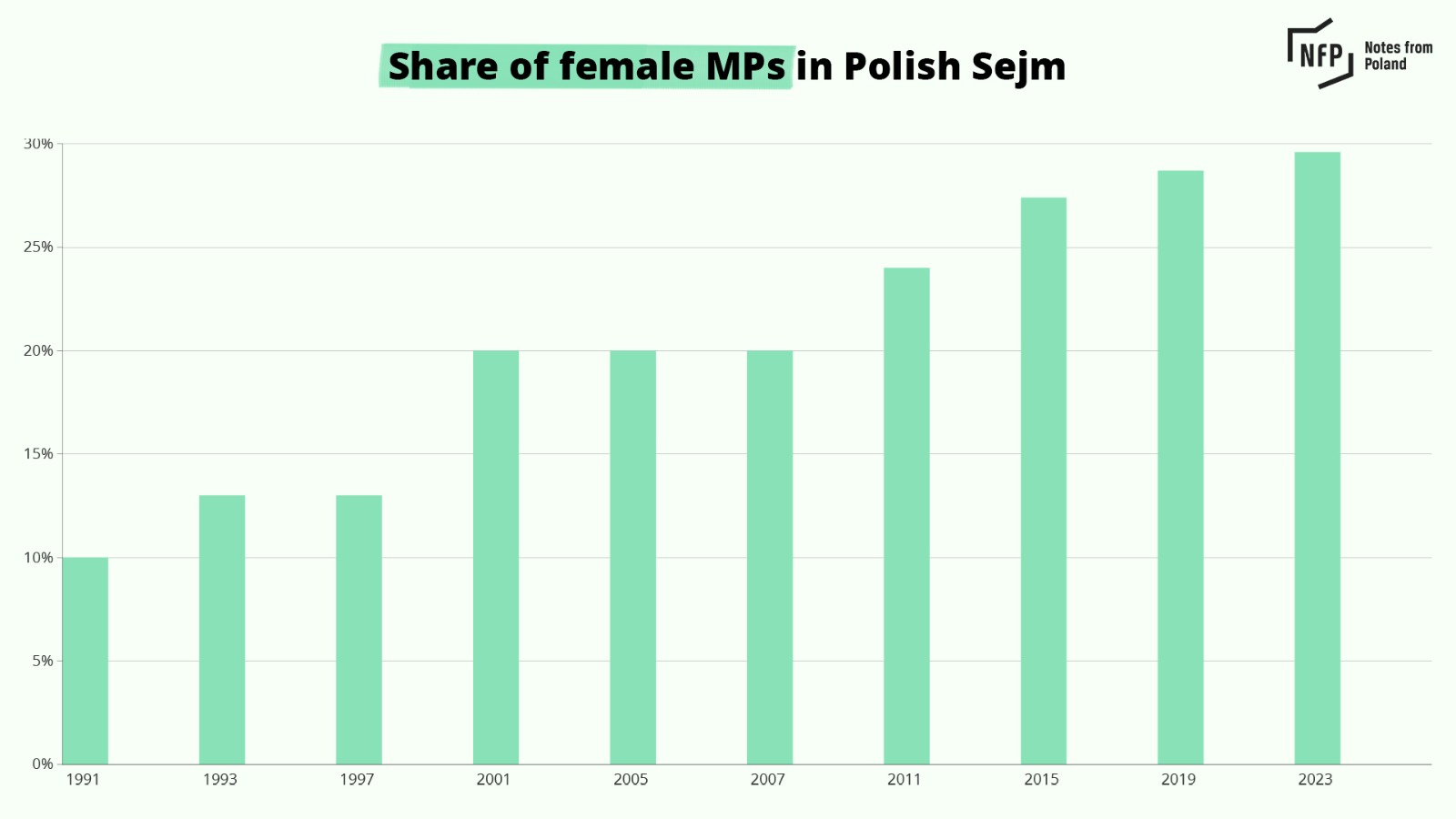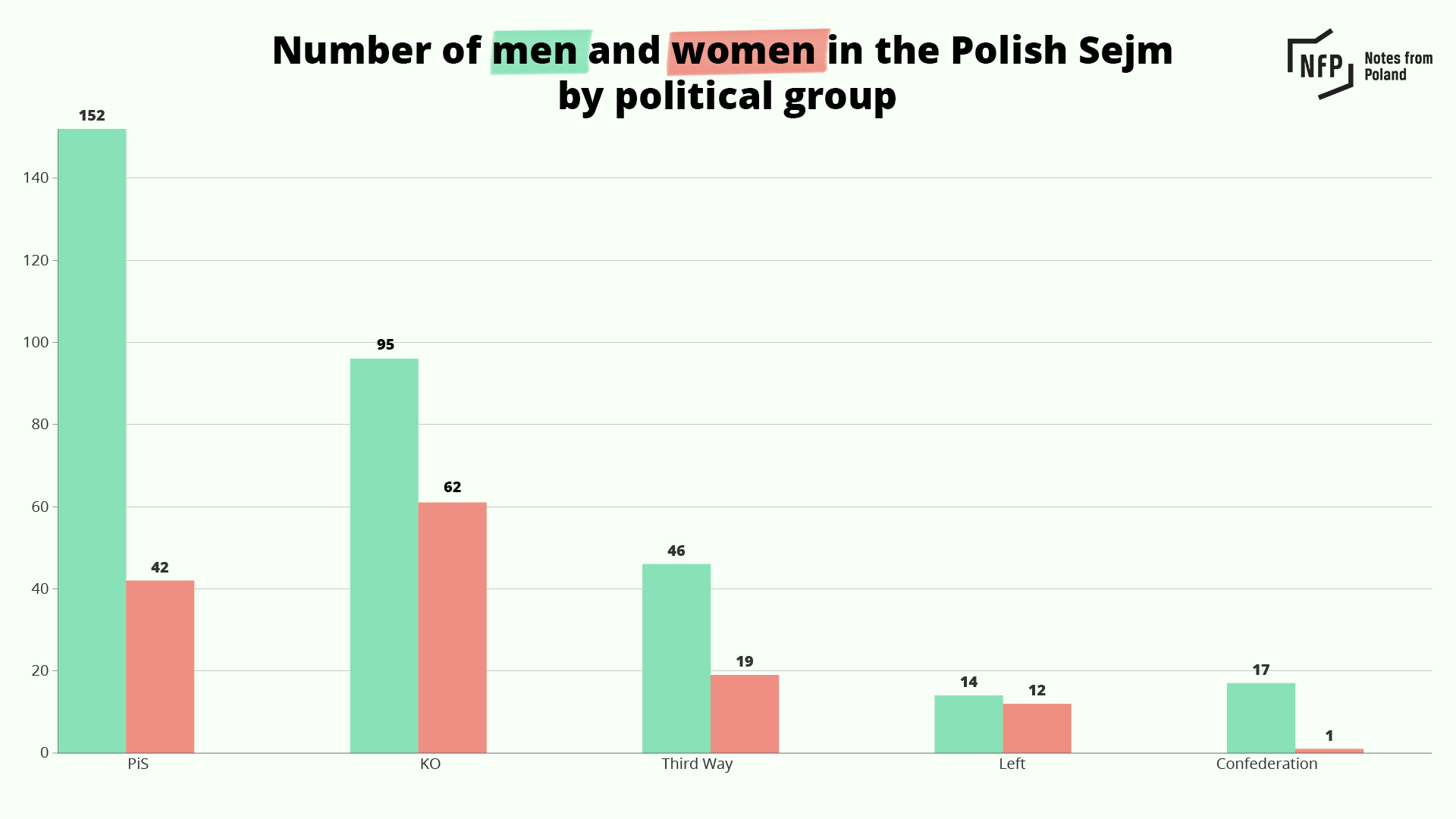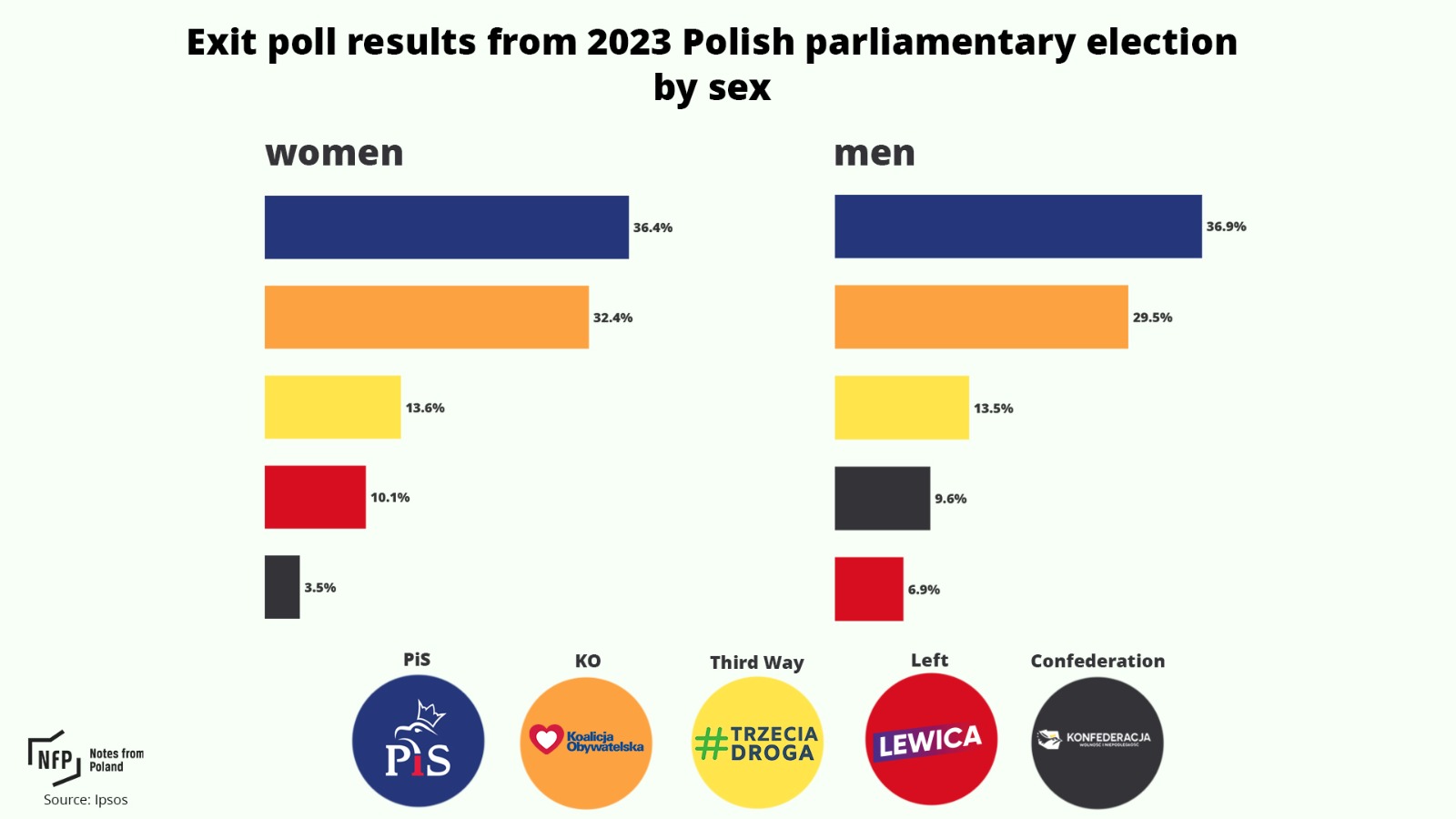A record 136 women were elected to sit in the Sejm – Poland’s more powerful lower house of parliament – at Sunday’s elections. That means 29.6% of the chamber’s 460 members will now be female, above the global average of 24.3% but below the EU-wide figure of 32.7%.
At the same time, however, the number of women in the 100-seat Senate – the weaker upper chamber – fell from 24 to 17.

This year saw a record 44% of candidates in the Sejm elections being women. However, female candidates were disproportionately likely to be lower down parties’ electoral lists than male ones, giving them less chance of being elected.
Among candidates who were elected, the group closest to gender parity is The Left (Lewica). Twelve of its 26 MPs (46%) are women. The far-right Confederation (Konfederacja) has the lowest proportion, with only one of its 18 MPs (6%) being female.
The national-conservative Law and Justice Party (PiS), which has been in power for the past eight years but has now lost its parliamentary majority, has 42 women among its 194 MPs (22%).
The largest opposition group, the centrist Civic Coalition (KO), has 62 women among its 157 MPs (39%), while the centre-right Third Way (Trzecia Droga) has 19 among its 65 MPs (29%).

During the election campaign, the opposition, especially KO and The Left, sought to mobilise female voters, including by promoting their own female candidates and by putting forward programmes focused on women.
Those two parties also aimed for gender parity among their candidates, with women making up 47.8% of candidates on KO’s electoral lists and 49.6% on those of The Left.
This share was lower, however, among the number one candidates on each group’s electoral lists, who generally have the best chance of being elected: 41.5% for KO and 34.2% for The Left. Third Way had 41.2% of female candidates overall, and 20% among top candidates.
Meanwhile 40.4% of PiS candidates were women, with only 24.4% top candidates being female. Confederation – a party whose main leaders are all men and which polls most strongly among male voters – had almost 40% female candidates but just 2.4% among top candidates.
Poland’s main opposition group has launched a campaign to promote its female candidates and mobilise women to vote in next month’s elections.
It comes as new figures show a record 44% of all candidates in the elections will be women, up from 23% in 2007 https://t.co/mkmJ8O3EDh
— Notes from Poland 🇵🇱 (@notesfrompoland) September 15, 2023
The exit poll published after the close of voting on Sunday evening indicated that turnout among female votes, at 73.7%, was slightly higher than the 72% among male ones.
The exit poll also showed that women were more likely than men to vote for the three mainstream opposition parties but much less likely to vote for Confederation. PiS attracted similar support among both male and female voters.


Notes from Poland is run by a small editorial team and published by an independent, non-profit foundation that is funded through donations from our readers. We cannot do what we do without your support.
Main image credit: Klub Lewicy/Flickr (under public domain)

Alicja Ptak is senior editor at Notes from Poland and a multimedia journalist. She previously worked for Reuters.



















